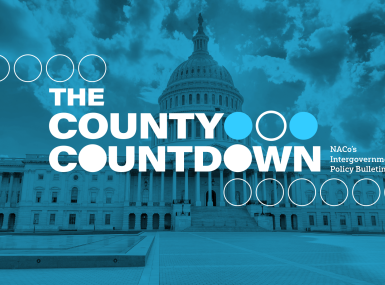USDA moves to expand flexibility for schools to offer free school meals

Key Takeaways
On March 23, the U.S. Department of Agriculture (USDA) proposed an expansion of the Community Eligibility Provision (CEP), an option by which schools with a sufficiently low-income population can offer free school meals to all students. Counties support this proposal, which would allow school districts in our communities to receive additional federal funding to support increased, nutritious meals for students in need.
USDA’s Notice of Proposed Rule Making (NPRM) would allow more schools to qualify for CEP program by lowering the minimum Identified Student Percentage (ISP) threshold from 40 percent to 25 percent. A school or district’s ISP represents the share of students who automatically qualify for free school lunch programs due to their participation in other means-tested federal assistance programs, such as the Supplemental Nutrition Assistance Program (SNAP) or Temporary Assistance to Needy Families (TANF) programs. Schools that qualify for CEP can then expand the free school lunch program to all enrolled students. In practice, this rule change would give schools the opportunity to receive increased federal reimbursement to support free school meals for all students. It would also reduce paperwork and other administrative burden for families and school employees by removing application requirements.
County governments serve as the front line of the social safety net, providing critical services funded by a combination of federal, state and local dollars that safeguard the health and economic wellbeing of our residents. As such, counties are crucial partners in supporting and administering child nutrition and education programs. In addition to administering the SNAP program in 10 states representing 32 percent of all program participants, counties fully or partially fund school meal programs in Alaska, Maryland, North Carolina, Tennessee and Virginia. County-funded programs across these states represent 18.2 percent of all free and reduced school lunch participants and 10.1 percent of school breakfast program participants.
Counties support federal policy changes, including the NPRM, to expand access to breakfast, lunch and snacks at school for all students at no cost and ensure that schools providers receive adequate funding and reimbursement to implement this program and meet rigorous nutrition standards.
USDA has requested public comments on the proposed change. NACo members can submit their comments here. Comments must be submitted before May 8, 2023 to be considered.
Additional Resources
Resource
Legislative Toolkit for Counties: Priorities for Strengthening the Supplemental Nutrition Assistance Program (SNAP)

Related News

County Countdown – Dec. 15, 2025
Every other week, NACo's County Countdown reviews top federal policy advocacy items with an eye towards counties and the intergovernmental partnership.
Stretching small opioid settlement allocations helps funding do more
States and localities are set to receive $56 billion in opioid settlement dollars over an 18-year period, but not every county that receives settlement funding will get enough to build out infrastructure.

